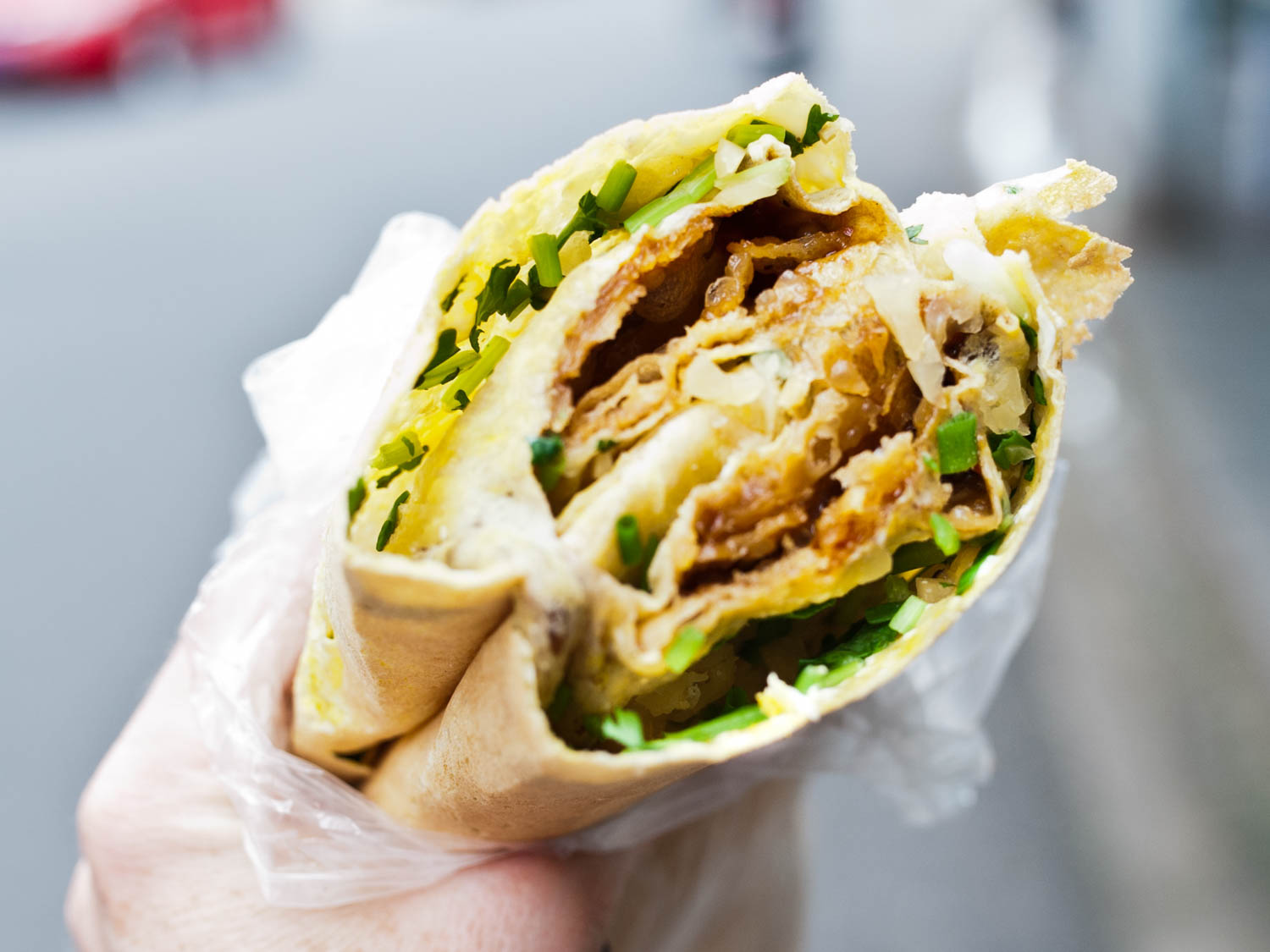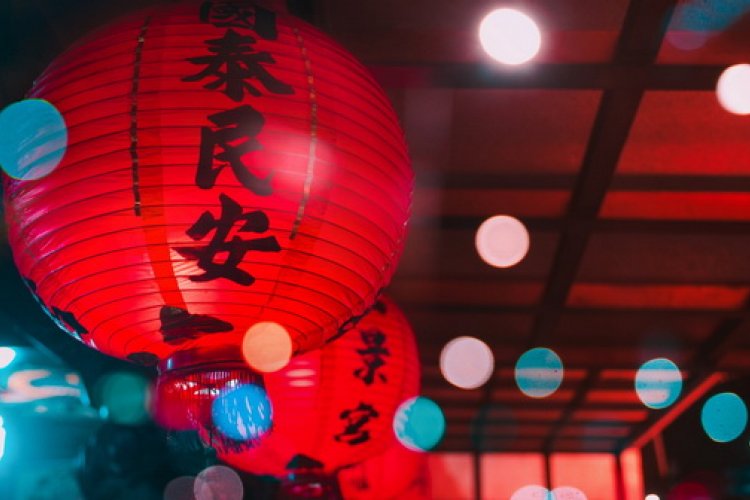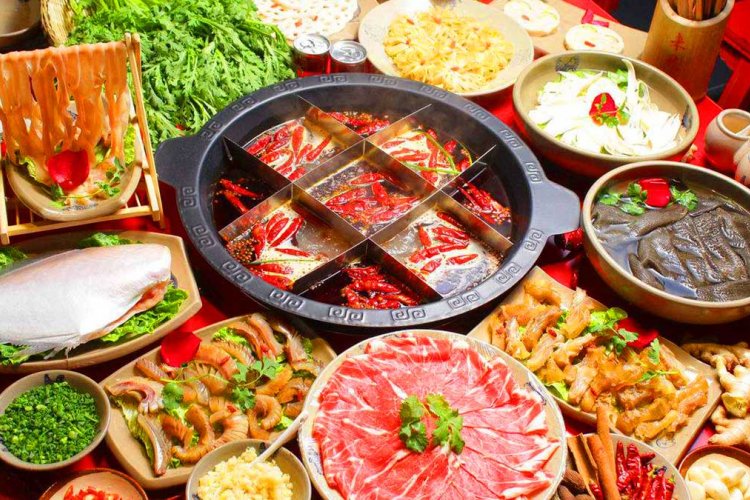Mandarin Monday: How to Order a Jianbing in Mandarin
Ubiquitous. Delicious. Not entirely nutritious. You can find them on the street in Beijing and Brooklyn. They are a staple of both morning commuters and late night revelers, the apex snack, the Egg McMuffin of Chinese breakfast foods: The humble 煎饼 jiānbing.
I remember the days when my mastery of Mandarin did not quite match my love of the crepe. It is a simple dish, but there are several key components, and I was no doubt a source of great amusement to my fellow snackers as they passed their time in the jianbing line watching me pantomime equivalents to “chili sauce” and “can you cook the egg a little bit more?”
While I would hate to deprive our Beijing friends and neighbors from any form of spontaneous street entertainment, I thought I’d offer a quick primer on the easiest way to order the jianbing of your dreams.
The Basics
First, the ordering formula where X equals your preferred number of jianbing. (You may think one jiānbing is enough, but what about your friends? What about for later? What about for those moments in life when you are blissfully stoned and ordering just one of any snack food is as incomprehensible as a Hozier song?)
“Sir, I’d like X jianbing.”
师傅, 来(X)个煎饼。
Shīfu, lái X ge jiānbing.
Then ask the price. This is especially important for late-night jiānbing transactions (or, really, any late-night transaction) in Sanlitun or Wudaokou.
How much is it?
多少钱?
Duō shǎo qián?
Basic enough phrase, right? Right out of Chapter 3 from Chinese 101, but the classics are classics for a reason.
Adding Ingredients
Now it gets a little complicated. What do you want on your jiānbing? Some people just go with the standard one egg 鸡蛋 jīdàn, scallions 葱 cōng, cilantro 香菜 xiāngcài, fermented flour paste (tastes better than it translates, right?) 面酱 miànjiàng, chili paste 辣椒 làjiāo, and fried crispy fritter/”jiānbing cracker” 薄脆 báocuì. A few vendors also throw in lettuce 生菜 shēngcài or other veggies as part of the standard package. And this isn't even getting into the regional varieties of the jiānbing.
There are also improvisations for the resolutely carnivorous. Some people add chicken 鸡肉 jīròu, sausage 肠儿 chángr (note the “er” on the pinyin), pork powder 肉松 ròusōng, or whatever other mystery meat the seller might have handy.
To add an ingredient, go with the basics again:
Wǒ yào 我要 + [ingredient] and fill in the blank from above or point if they have something on offer that’s less common.
For example, eggs. How many eggs do you want. Usually, it’s one, some people like two. For two eggs say:
I want two eggs.
要两个鸡蛋
Yào liǎnggè jīdàn.
Things You Don't Want
Some people are also particular about what doesn’t go into their jiānbing. For example, I have a colleague who thinks cilantro tastes like soap. In that case, we have to make cuts:
I don’t want chili sauce
不要辣椒,
búyào làjiāo
I don’t want any (brown) sauce
不要面酱
búyào miànjiàng
I don’t want any scallions
不放葱
bú fàng cōng
I don’t want any cilantro
不放香菜
bú fàng xiāngcài
I don’t want any lettuce
不放生菜
bú fàng shēngcài
I don’t want the fritter [But come on? Who doesn’t love the fritter?]
不要薄脆
búyào báocuì
Note the two verbs yào 要 “want” and fàng 放 “put/place” are used interchangeably here although they mean different things. One simply expresses your preference, the other expresses a request for the maker of the jiānbing.
Of course, you may just want to go all-in and have your chef load up your bing with everything he or she has.
Gimme the works!
所有的佐料都要!
Suǒyǒu de zuǒliào dōu yào!
Finally, I often find that the eggs aren’t cooked quite long enough and this gives the jiānbing a slightly gooey texture. If you are like me and prefer your jianbing well-done, you can ask the chef:
Would you mind giving it a little bit more time on the griddle?
煎饼多烤会?
Jiānbing duō kǎo huì?
And of course, because you always want to be polite with those who handle your food:
Thank you, sir!
谢谢师傅。
Xièxiè shīfu.
READ: Do You Know Your Jianbing From Your Jidan Guanbing?
Jeremiah Jenne is a writer, educator, and historian based in Beijing since 2002. He is also the founder of Beijing by Foot, which offers historical walks, tours, and workshops in Beijing. You can find him on Twitter @granitestudio.
Photo: seriouseats.com







